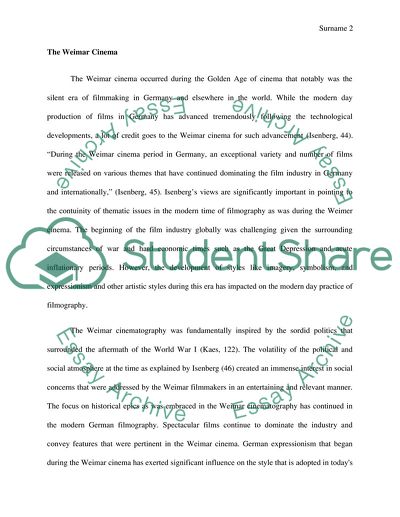Cite this document
(“The Weimar Cinema Essay Example | Topics and Well Written Essays - 2000 words”, n.d.)
The Weimar Cinema Essay Example | Topics and Well Written Essays - 2000 words. Retrieved from https://studentshare.org/visual-arts-film-studies/1702113-the-weimar-cinema
The Weimar Cinema Essay Example | Topics and Well Written Essays - 2000 words. Retrieved from https://studentshare.org/visual-arts-film-studies/1702113-the-weimar-cinema
(The Weimar Cinema Essay Example | Topics and Well Written Essays - 2000 Words)
The Weimar Cinema Essay Example | Topics and Well Written Essays - 2000 Words. https://studentshare.org/visual-arts-film-studies/1702113-the-weimar-cinema.
The Weimar Cinema Essay Example | Topics and Well Written Essays - 2000 Words. https://studentshare.org/visual-arts-film-studies/1702113-the-weimar-cinema.
“The Weimar Cinema Essay Example | Topics and Well Written Essays - 2000 Words”, n.d. https://studentshare.org/visual-arts-film-studies/1702113-the-weimar-cinema.


